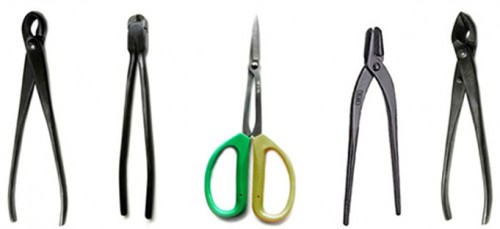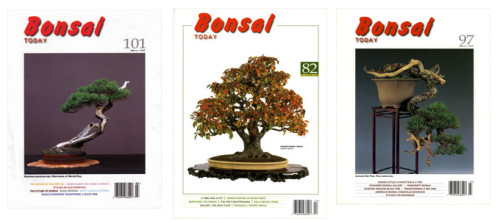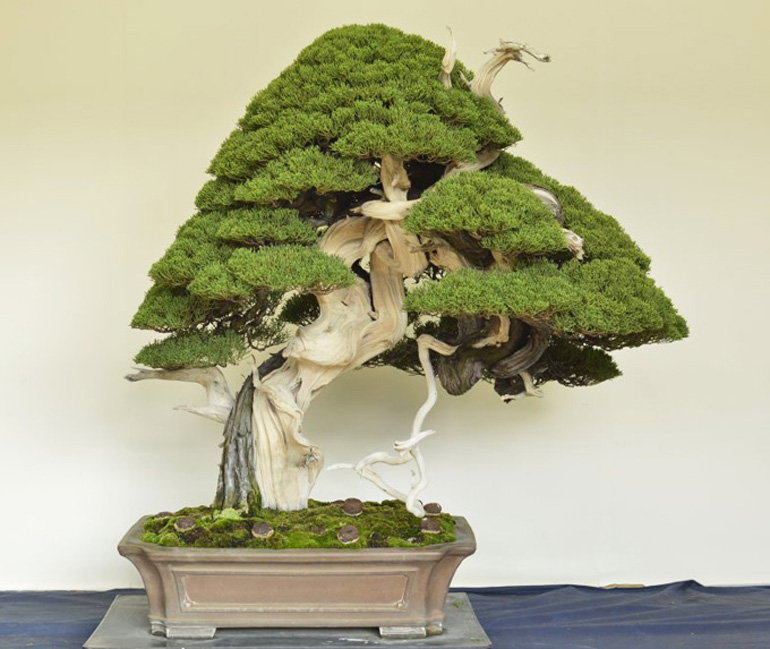 One of several great Shimpaku junipers from a post by Bjorn Bjorholm. I picked this one in part because of the little curlycue jin (dead branch) hanging down. I've seen plenty of other intriguing jins, but this one is so distinctive and in a place so prominent that it comes close to stealing the show (in spite of the light background that diminishes its effect, and in spite of the many other wonders of this tree).
One of several great Shimpaku junipers from a post by Bjorn Bjorholm. I picked this one in part because of the little curlycue jin (dead branch) hanging down. I've seen plenty of other intriguing jins, but this one is so distinctive and in a place so prominent that it comes close to stealing the show (in spite of the light background that diminishes its effect, and in spite of the many other wonders of this tree).
We’re busy around here, but we’re still trying to post everyday. So, it’s the archives again. This one is from April 2014. I picked it because it ties in nicely with yesterday’s post.
Not that anybody remembers or cares… still it’s time to come through on an old promise. In February of last year we posted some excellent pines from Bjorn Bjorholm’s website and made this promise at the time: “Just pines this time. I’m so taken with these trees that I’ve decided to make this a two part (or more) series. This first installment is devoted to pines. Next we’ll feature some of the equally impressive Shimpaku on Bjorn’s site. Maybe some others too.”
So, fourteen months later, here are the promised Shimpakus (plus one crazy Procumbens).
But first, just in case you are wondering, I do know that the world is overrun with Shimpaku that posses amazing deadwood. How many more do we need to look at? Still, we haven’t shown many lately and in spite of their abundance, the best are still mind-stoppers. Including the ones shown here.
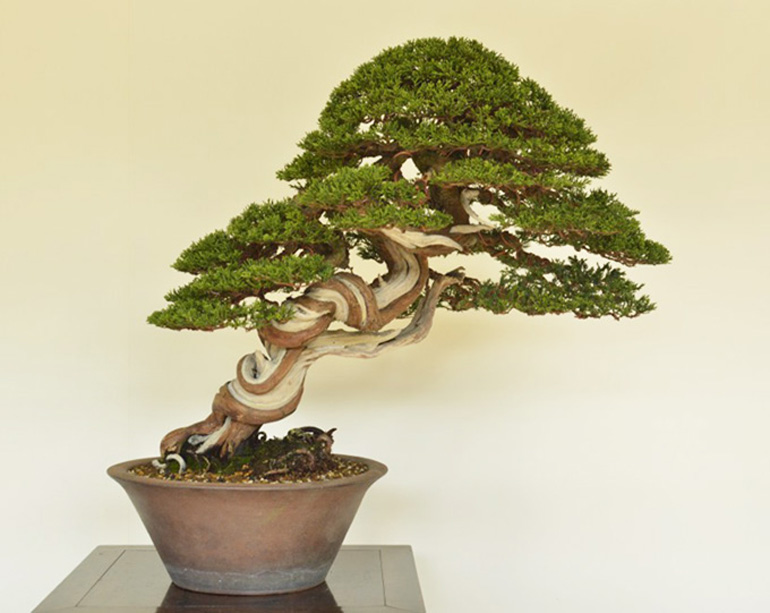 Doing the twist. There are plenty of other twisted Shimpakus, but you have to admit that this one is exceptional.
Doing the twist. There are plenty of other twisted Shimpakus, but you have to admit that this one is exceptional.
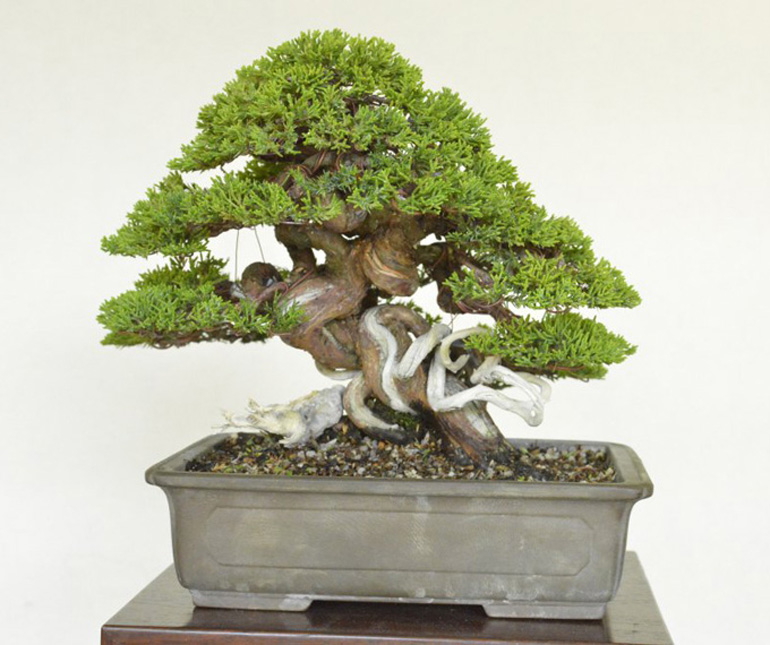 A crazy short, chubby twister. Not so sure this is the right pot though.
A crazy short, chubby twister. Not so sure this is the right pot though.
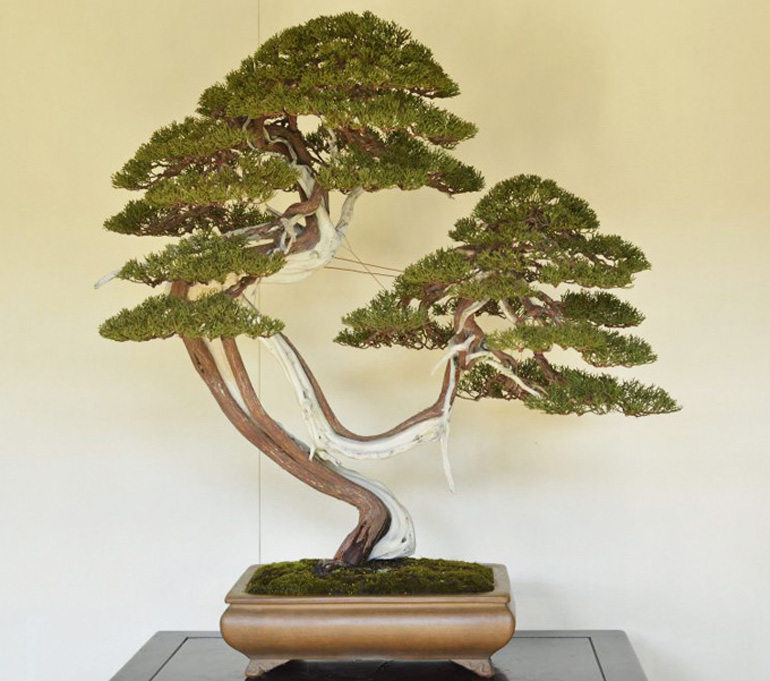 Two headed monster. I have a soft spot for good double crowned trees. Especially when one crown is clearly subordinate. Beyond that, you might admire the way the long fluid sweep of the trunk is mirrored by the long fluid sweep that leads to the second crown.
Two headed monster. I have a soft spot for good double crowned trees. Especially when one crown is clearly subordinate. Beyond that, you might admire the way the long fluid sweep of the trunk is mirrored by the long fluid sweep that leads to the second crown.
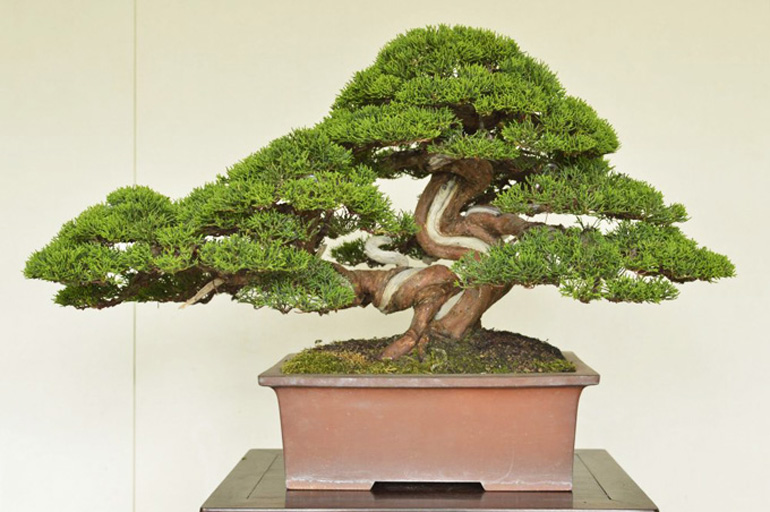 Pointing the way. You don't often see two trunks in two different styles on the same tree. In this case, the dominant trunk is informal upright and the other one is semi-cascade. A couple other things stand out: the way the two trunks snuggle in together and the way the two trees come together to create a single crown.
Pointing the way. You don't often see two trunks in two different styles on the same tree. In this case, the dominant trunk is informal upright and the other one is semi-cascade. A couple other things stand out: the way the two trunks snuggle in together and the way the two trees come together to create a single crown.
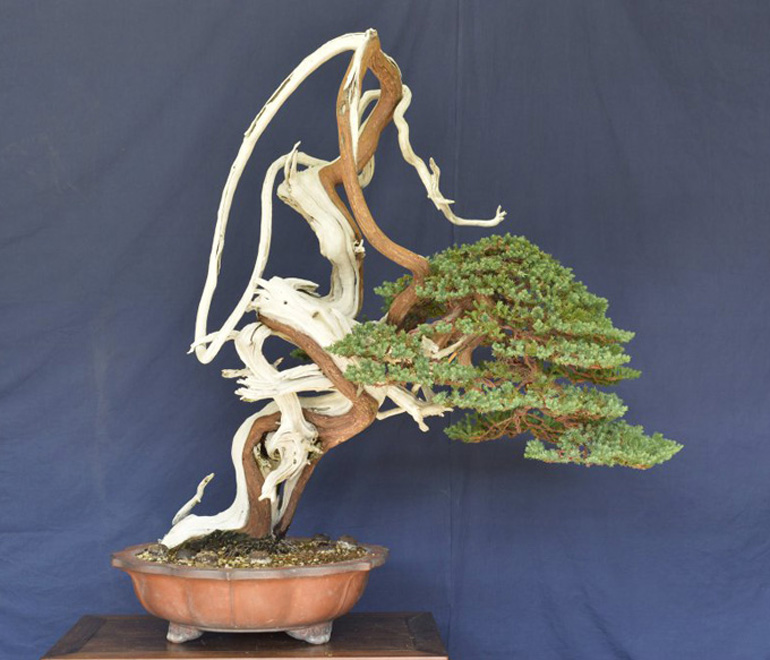 We've shown this crazy tree before, but this is a better photo. Like the other trees in this post, it's from Bjorn Bjorholm's Bjorvala Bonsai Studio. It's a Procumbens juniper that looks a whole lot like a Shimpaku juniper (except for the foliage).
We've shown this crazy tree before, but this is a better photo. Like the other trees in this post, it's from Bjorn Bjorholm's Bjorvala Bonsai Studio. It's a Procumbens juniper that looks a whole lot like a Shimpaku juniper (except for the foliage).
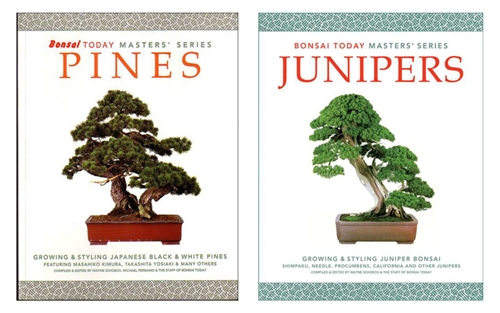 Speaking of Pines and Junipers. These excellent benchmark bonsai books are now only 44.95 for the set of two (list price 59.90). What’s more, you’ll earn FREE Shipping (on orders 40.00 or more – U.S. only)
Speaking of Pines and Junipers. These excellent benchmark bonsai books are now only 44.95 for the set of two (list price 59.90). What’s more, you’ll earn FREE Shipping (on orders 40.00 or more – U.S. only)
If you don’t need both books, they are discounted individually too (Pine book or Juniper book).
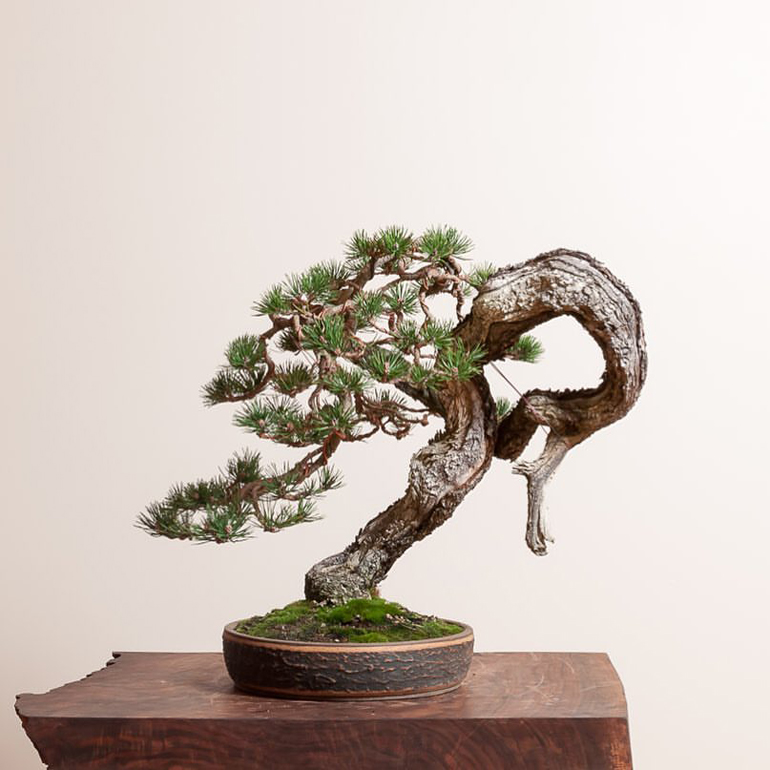
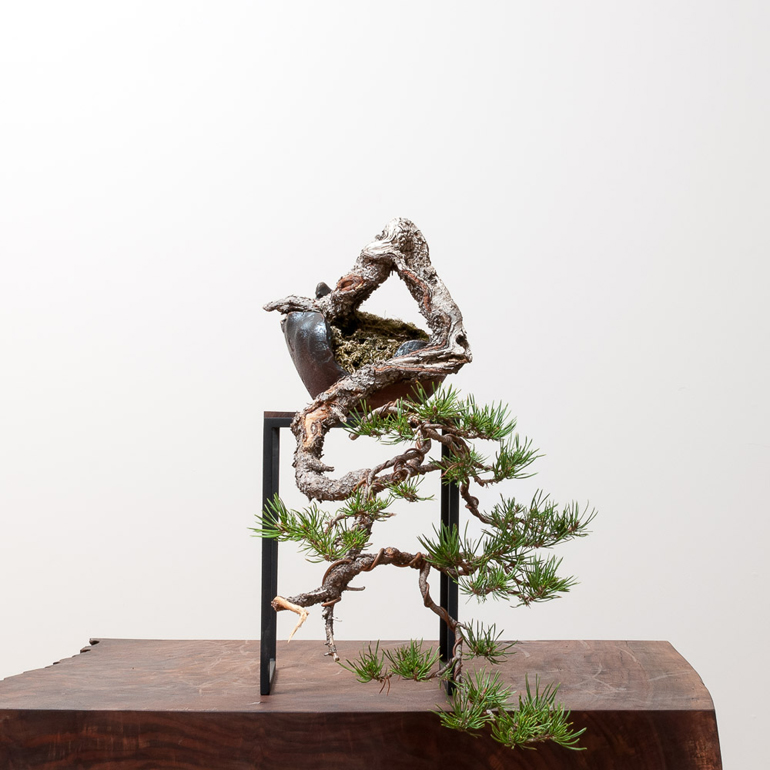
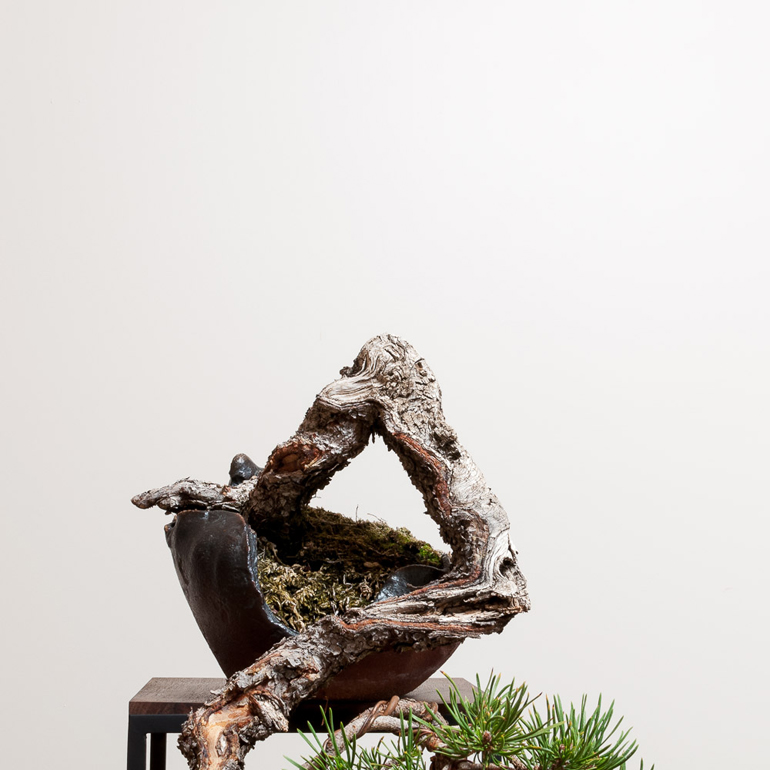
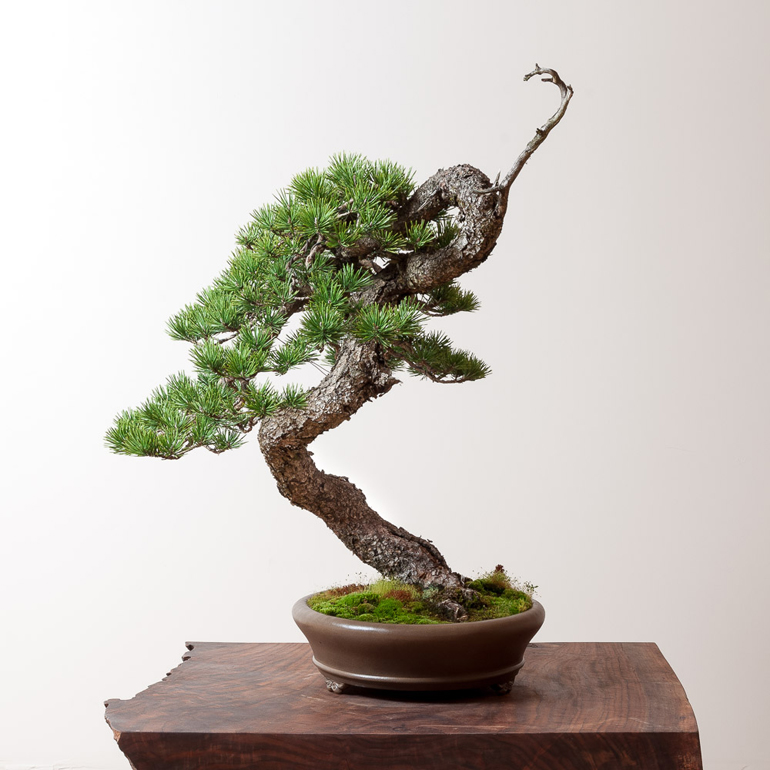
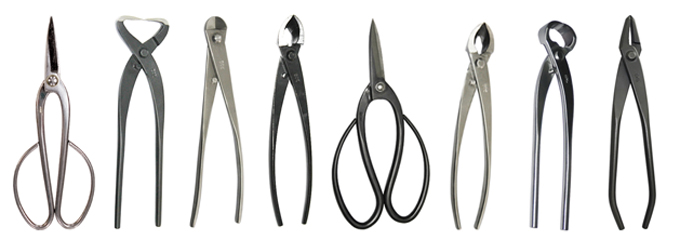
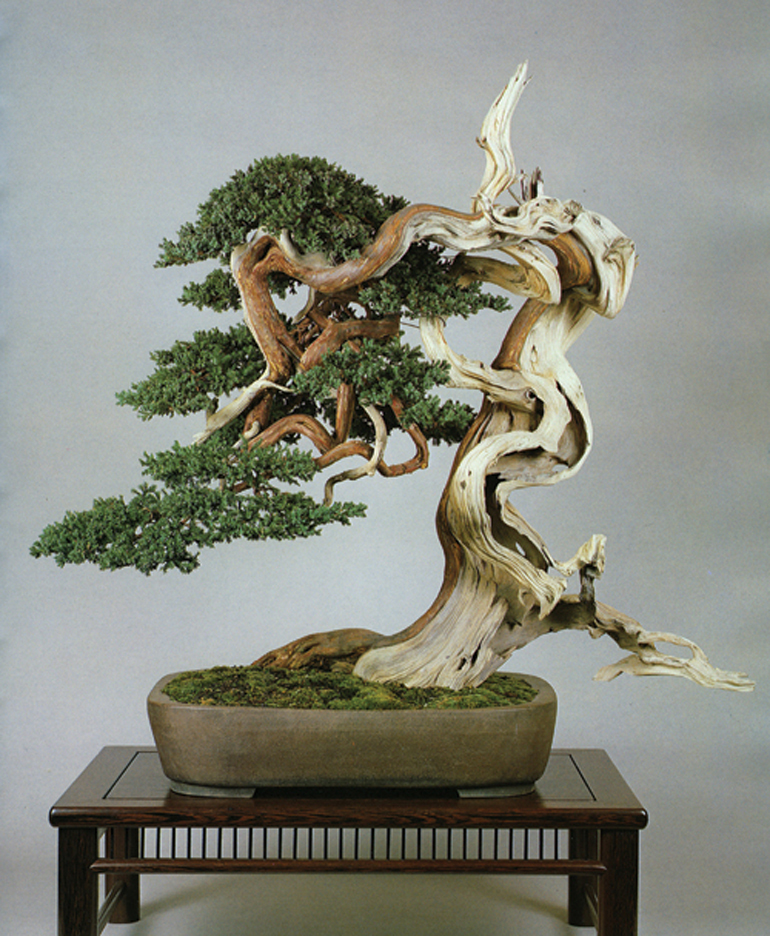
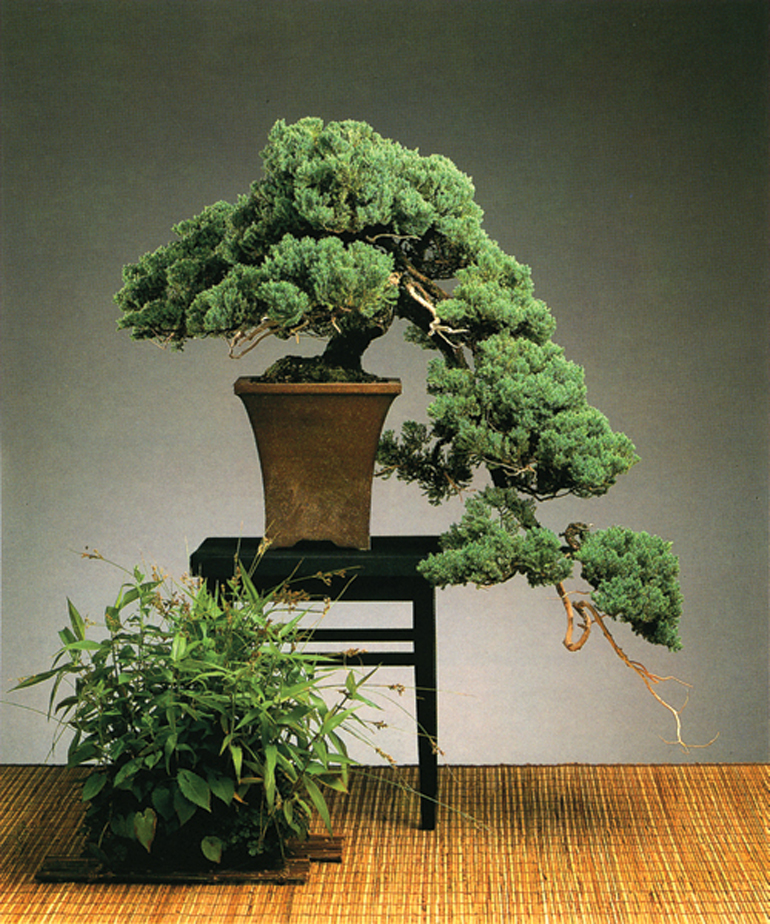
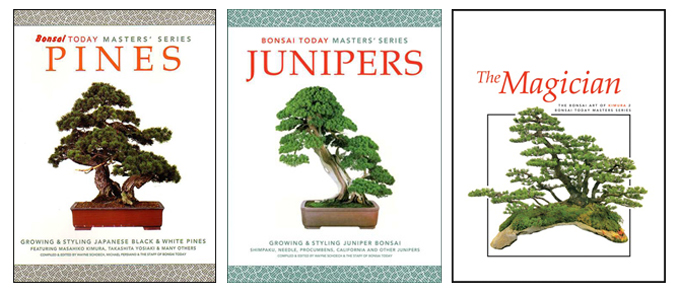
 One of several
One of several  Doing the twist. There are plenty of other twisted Shimpakus, but you have to admit that this one is exceptional.
Doing the twist. There are plenty of other twisted Shimpakus, but you have to admit that this one is exceptional. A crazy short, chubby twister. Not so sure this is the right pot though.
A crazy short, chubby twister. Not so sure this is the right pot though. Two headed monster. I have a soft spot for good double crowned trees. Especially when one crown is clearly subordinate. Beyond that, you might admire the way the long fluid sweep of the trunk is mirrored by the long fluid sweep that leads to the second crown.
Two headed monster. I have a soft spot for good double crowned trees. Especially when one crown is clearly subordinate. Beyond that, you might admire the way the long fluid sweep of the trunk is mirrored by the long fluid sweep that leads to the second crown. Pointing the way. You don't often see two trunks in two different styles on the same tree. In this case, the dominant trunk is informal upright and the other one is semi-cascade. A couple other things stand out: the way the two trunks snuggle in together and the way the two trees come together to create a single crown.
Pointing the way. You don't often see two trunks in two different styles on the same tree. In this case, the dominant trunk is informal upright and the other one is semi-cascade. A couple other things stand out: the way the two trunks snuggle in together and the way the two trees come together to create a single crown.
 Speaking of Pines and Junipers. These excellent benchmark bonsai books are now
Speaking of Pines and Junipers. These excellent benchmark bonsai books are now 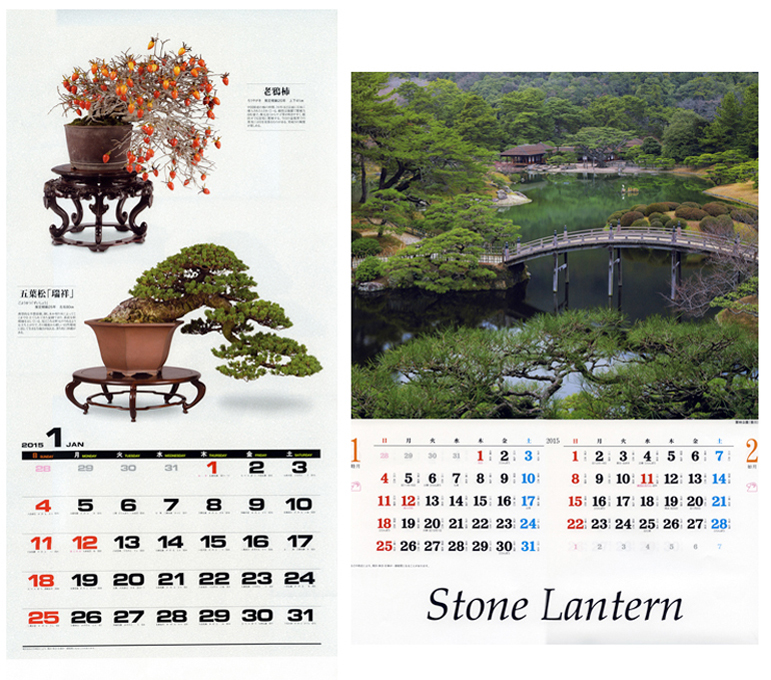
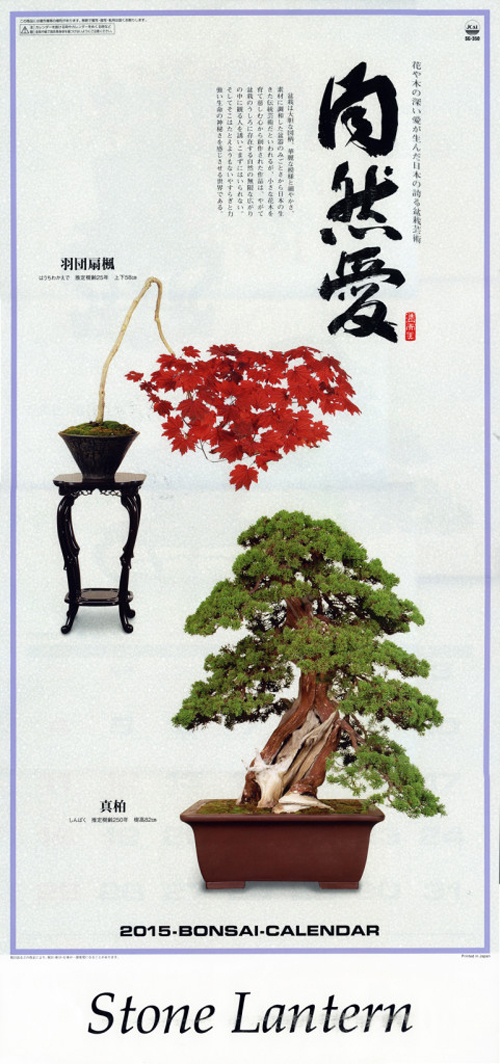
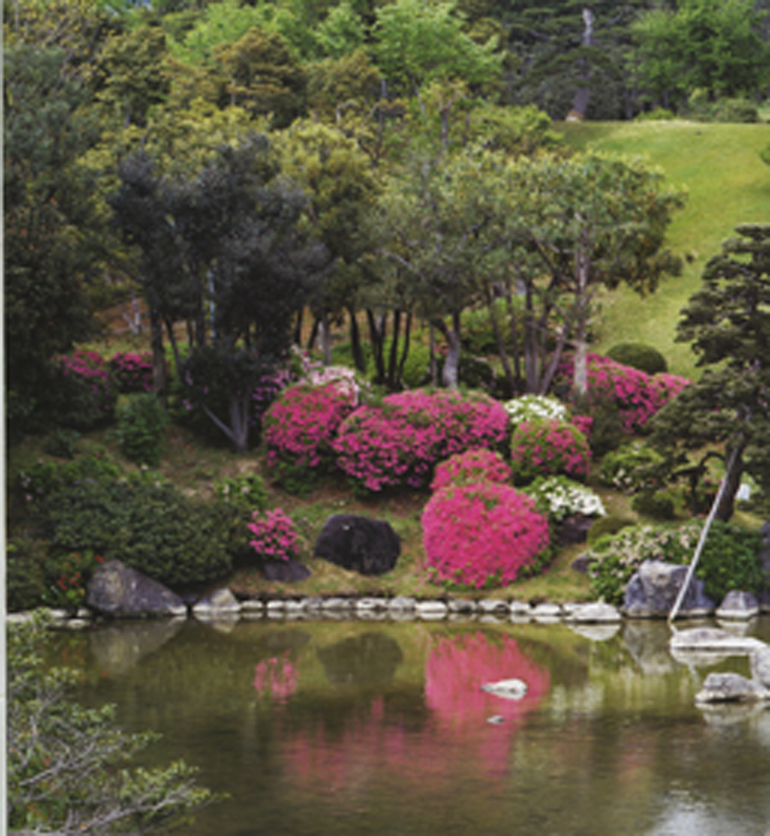
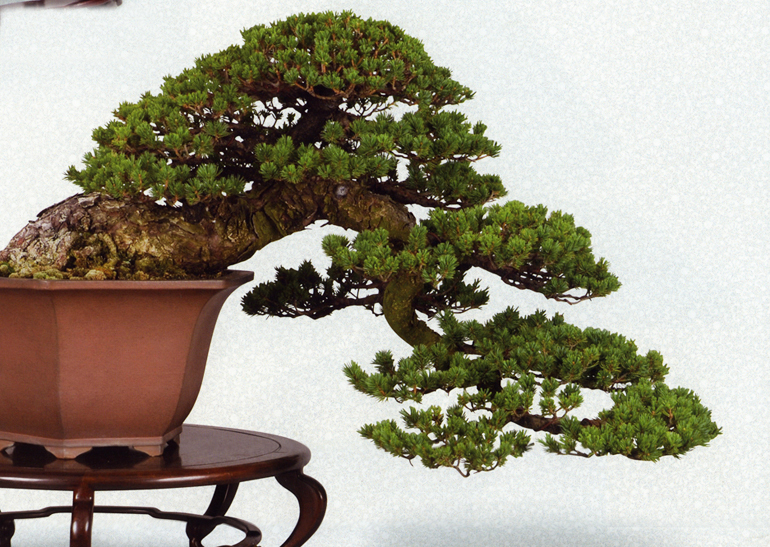
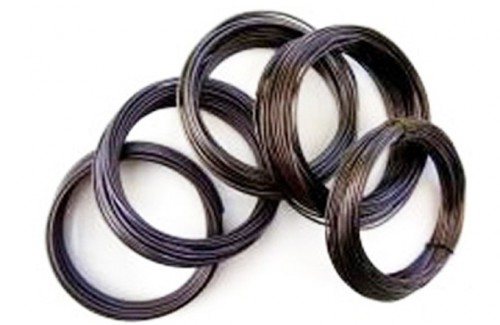
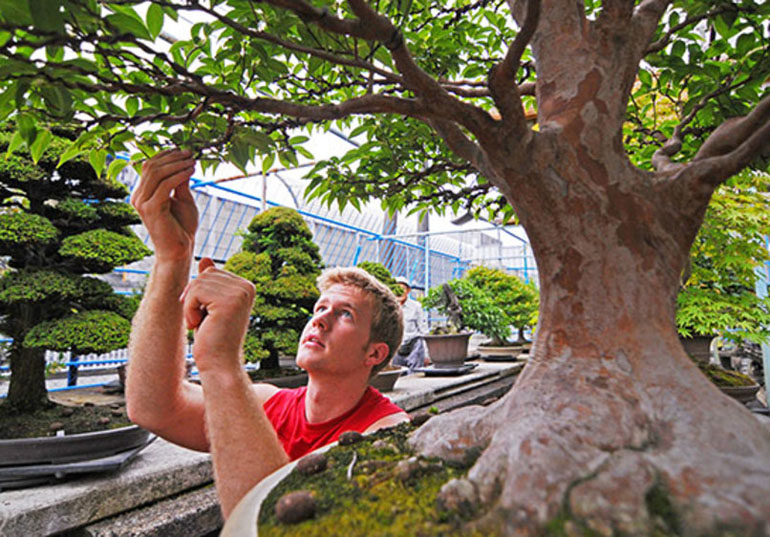
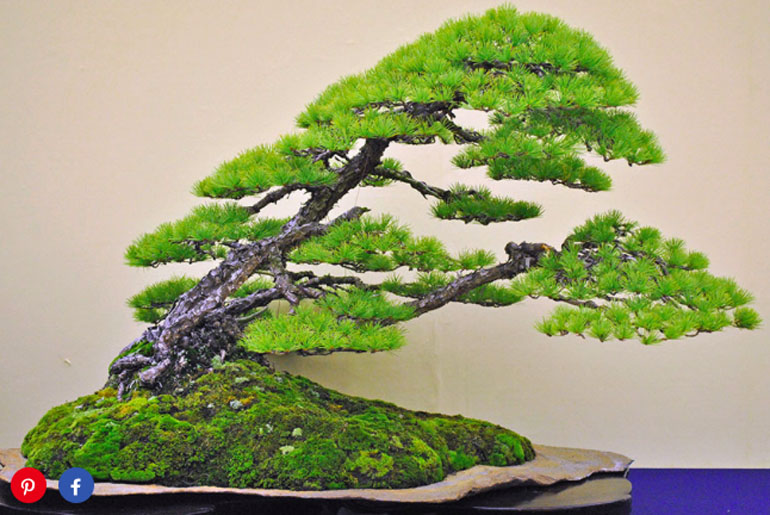
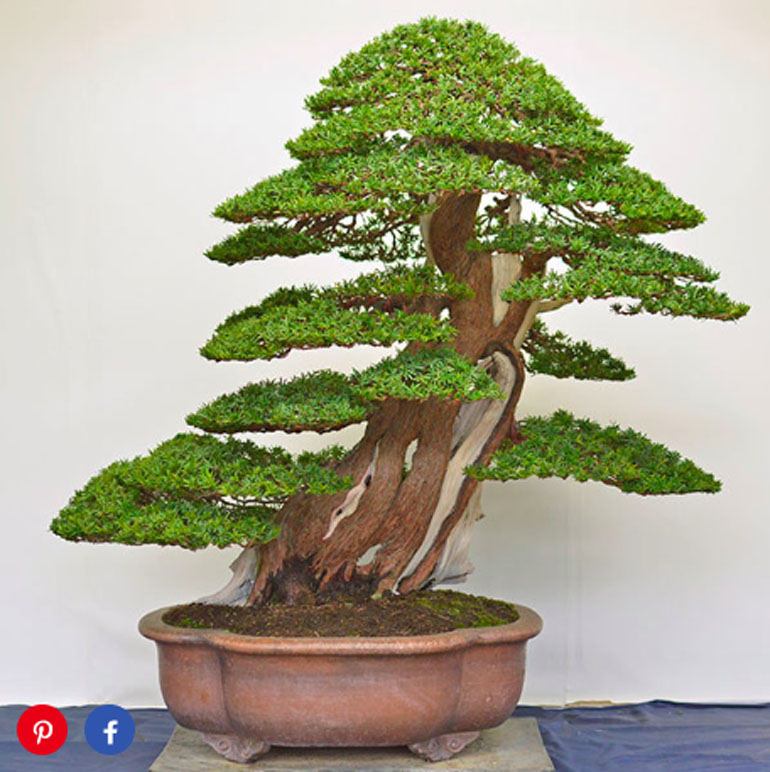
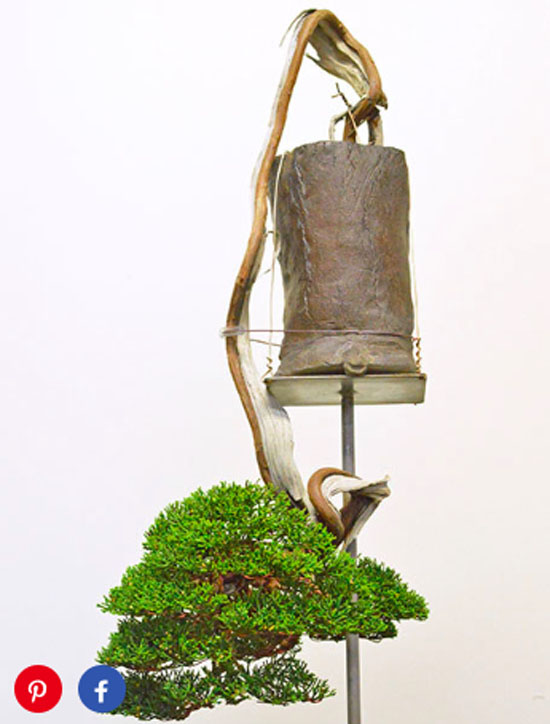
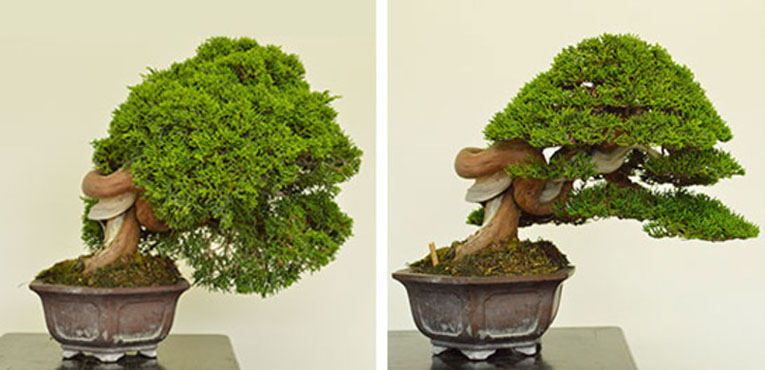
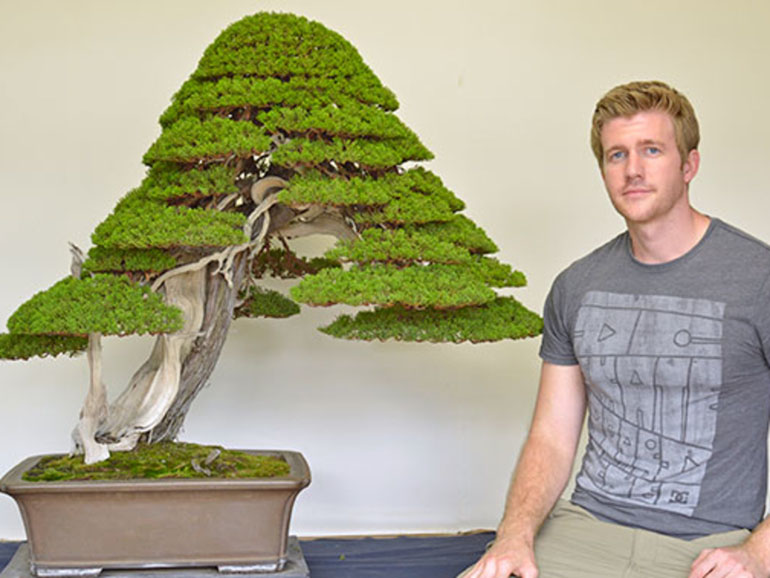

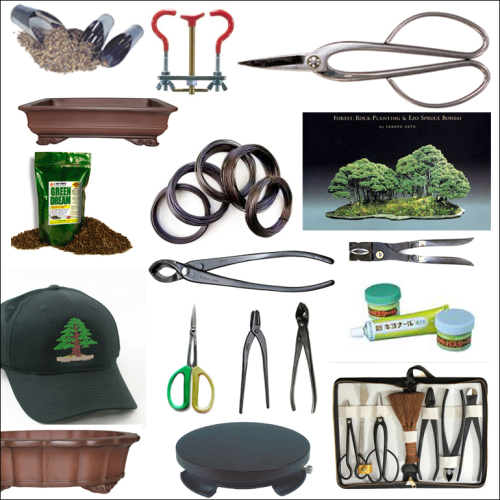
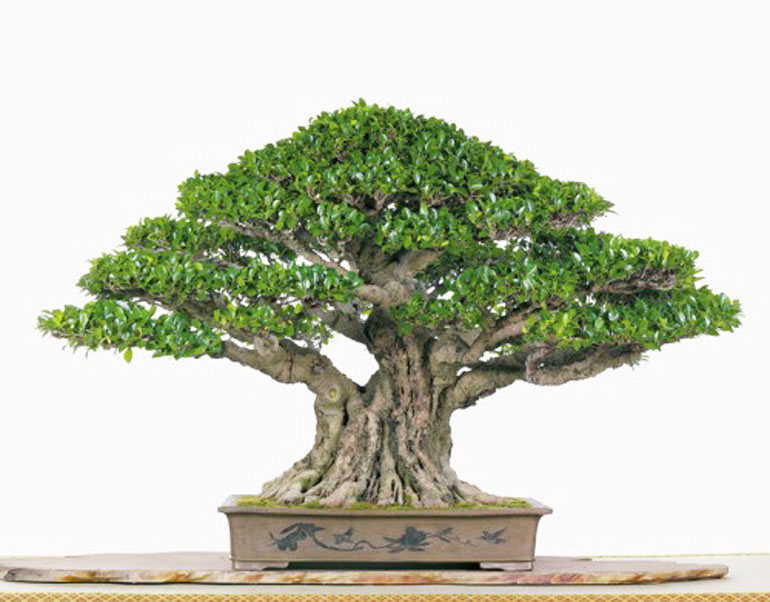 I'm running out of superlatives. How about 'somewhere north of magnificent.' My only question is; could the pot be a little bigger? It's a Ficus by
I'm running out of superlatives. How about 'somewhere north of magnificent.' My only question is; could the pot be a little bigger? It's a Ficus by 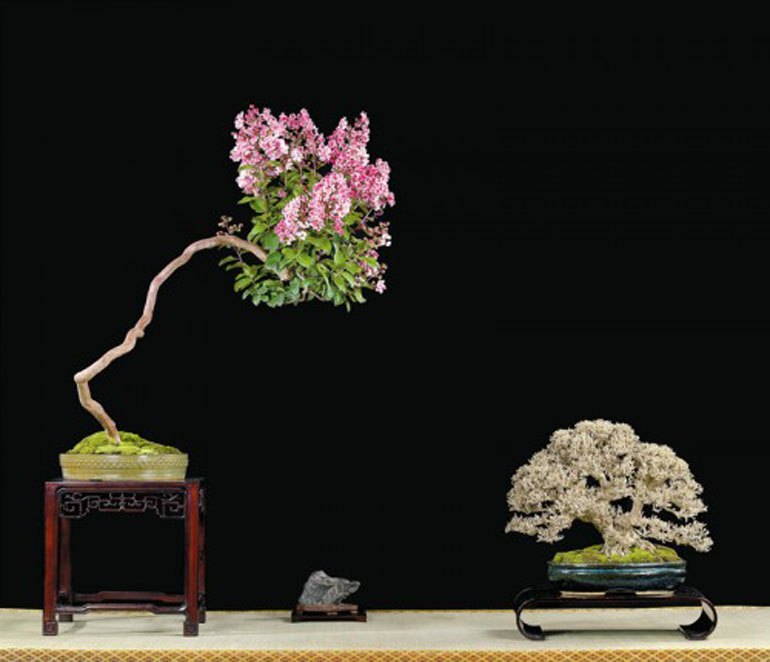 A little change of pace. The tree on the right (Elaeagnus Pungens) has the mark of Min. At least the
A little change of pace. The tree on the right (Elaeagnus Pungens) has the mark of Min. At least the 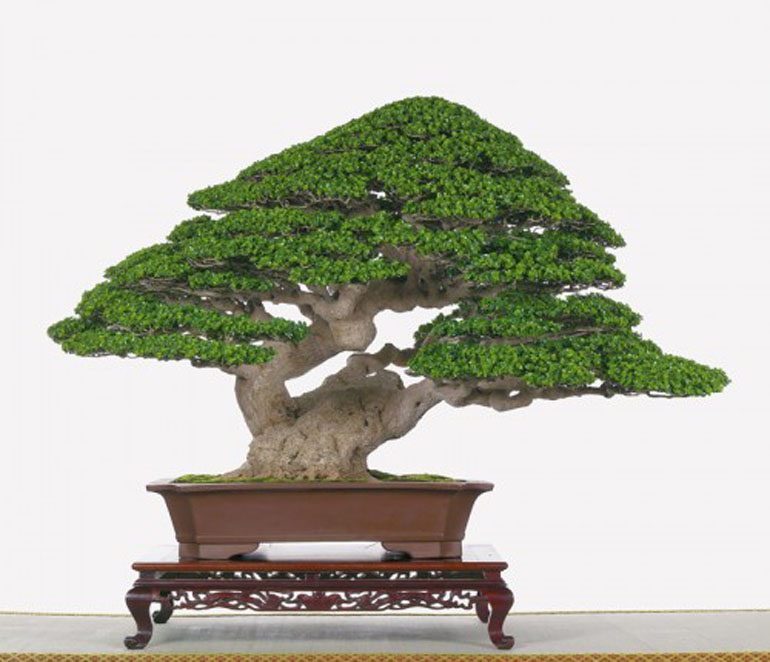 Powerful, unique and full of movement, though knowing our audience, I imagine some may feel that the foliage is overly groomed. Premna microphylla by
Powerful, unique and full of movement, though knowing our audience, I imagine some may feel that the foliage is overly groomed. Premna microphylla by 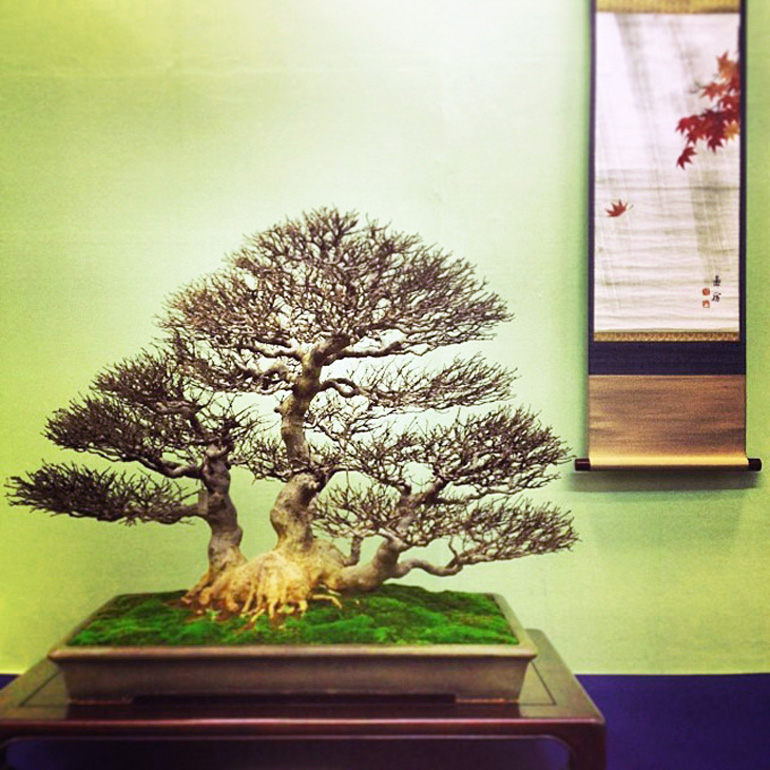 Trident maple at the 2013 Taikan-ten Exhibition. There's a lot going on with the tree; three major trunks and a baby one sticking out the back, a large mounding nebari and a whole lot of movement. I particularly like the trunk on the right that emerges from the base of the nebari (the base of the base). I borrowed the photo from
Trident maple at the 2013 Taikan-ten Exhibition. There's a lot going on with the tree; three major trunks and a baby one sticking out the back, a large mounding nebari and a whole lot of movement. I particularly like the trunk on the right that emerges from the base of the nebari (the base of the base). I borrowed the photo from 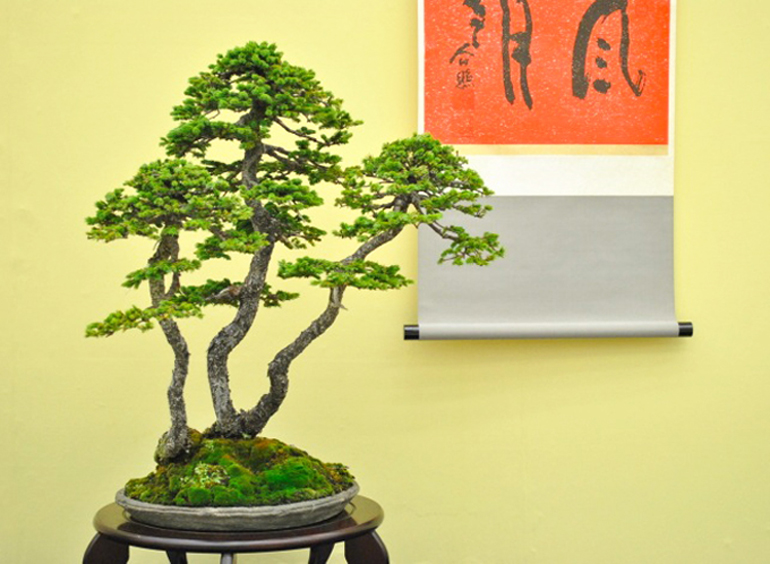 I'm not sure what this is (Ezo spruce?) but I am sure that it's a great tree. I wonder if
I'm not sure what this is (Ezo spruce?) but I am sure that it's a great tree. I wonder if 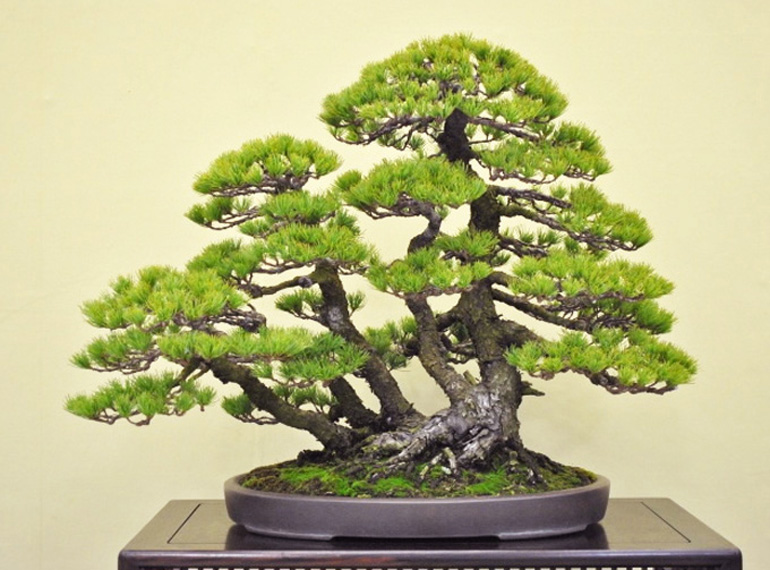 This one looks like a
This one looks like a 
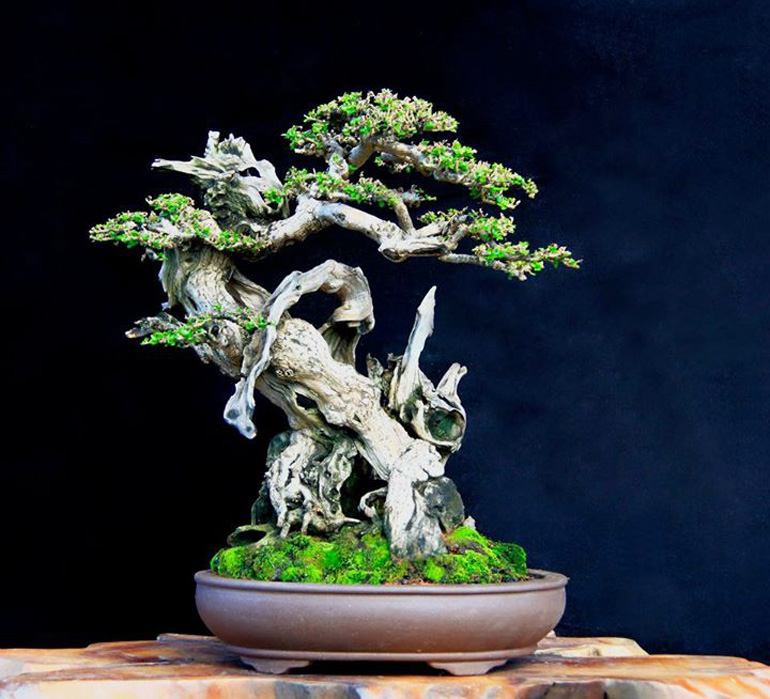
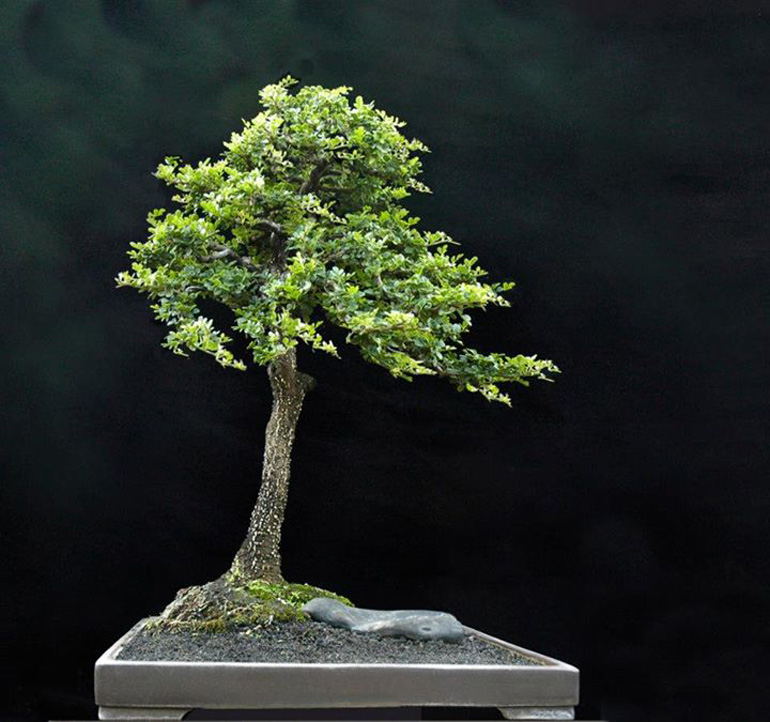
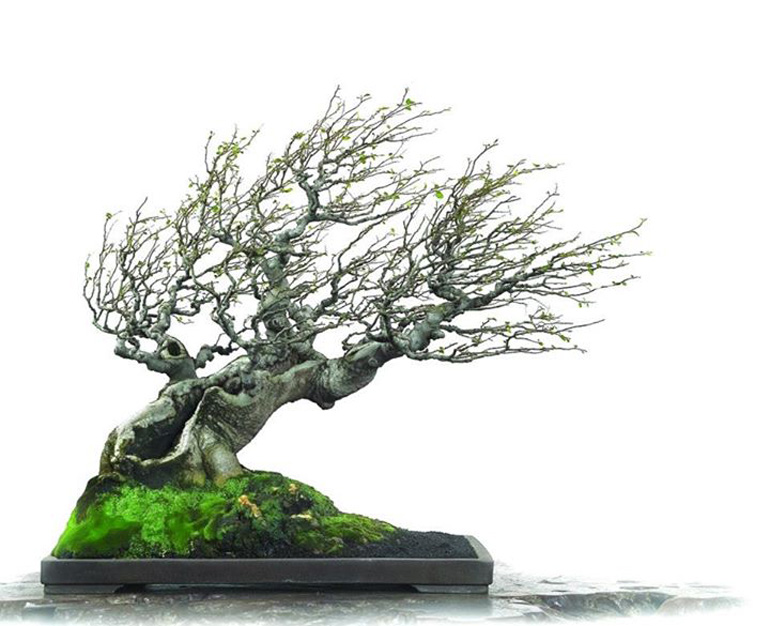
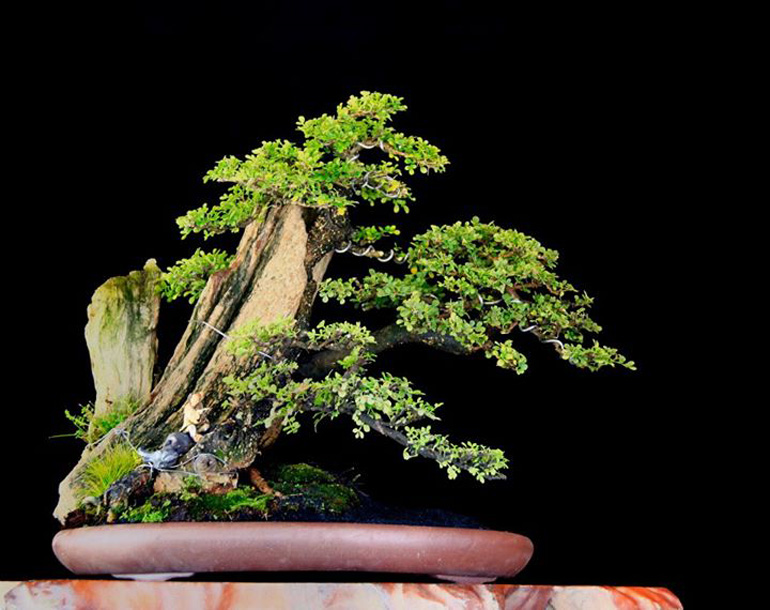
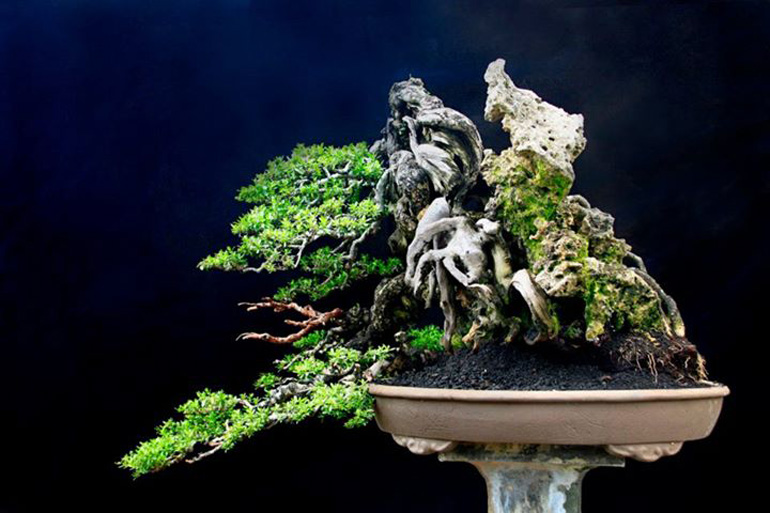
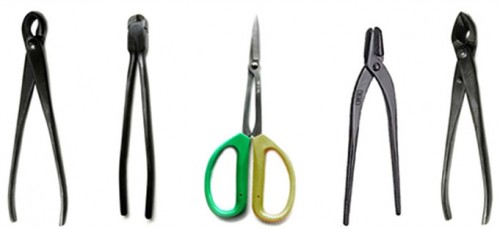
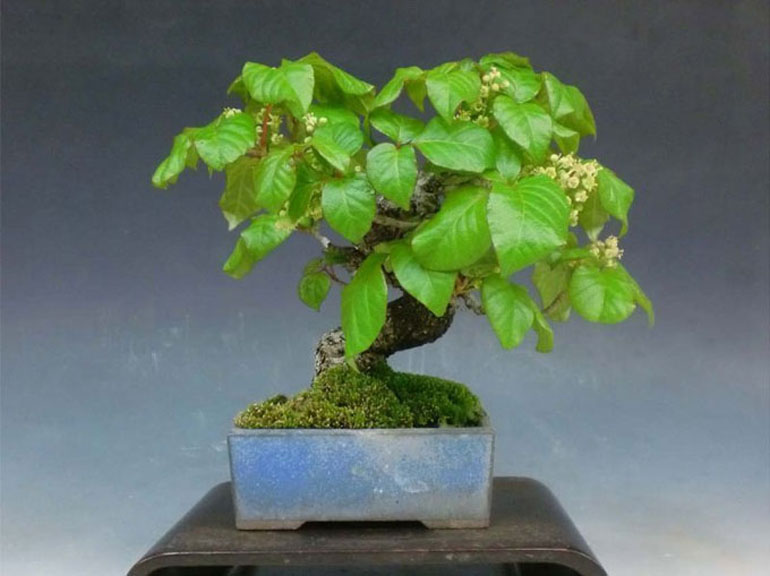 This sweet to look at, but otherwise nasty little bonsai is from
This sweet to look at, but otherwise nasty little bonsai is from 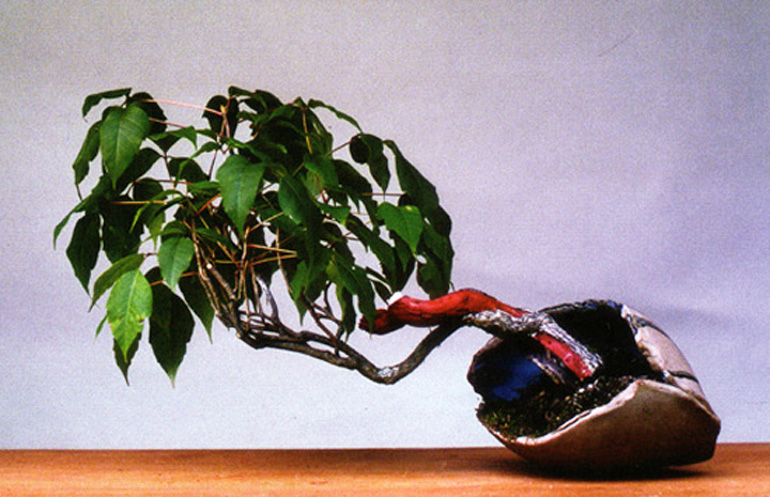 This one is from Nick Lenz'
This one is from Nick Lenz' 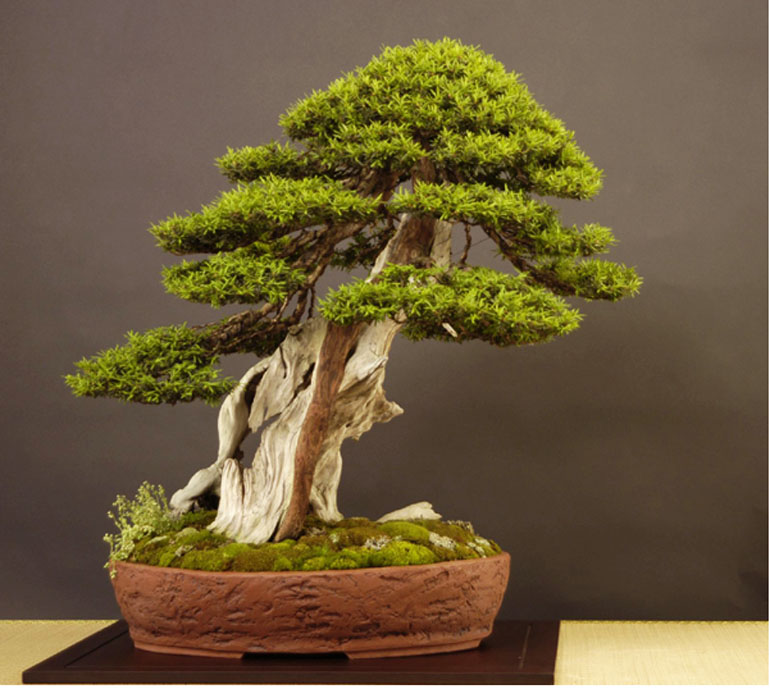
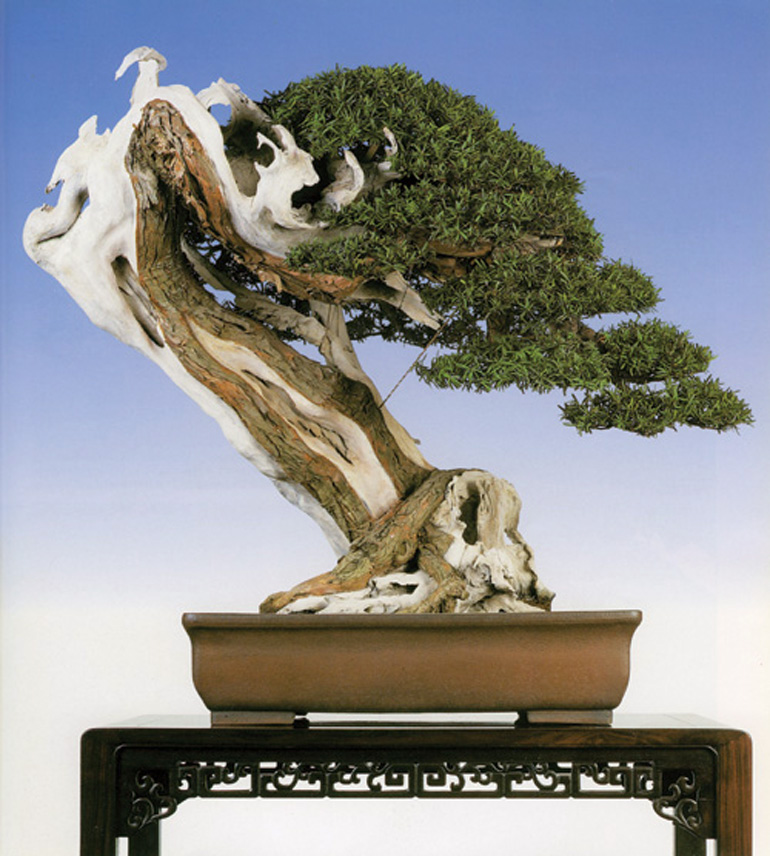 This powerful and famous Yew by Bonsai Master Masahiko Kimura is in a class by itself. It's from our book
This powerful and famous Yew by Bonsai Master Masahiko Kimura is in a class by itself. It's from our book 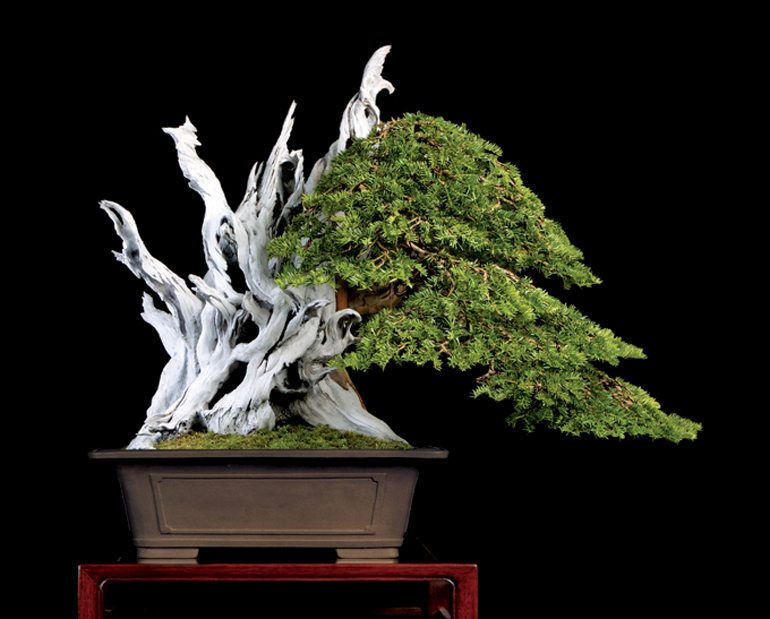 Every time I open
Every time I open 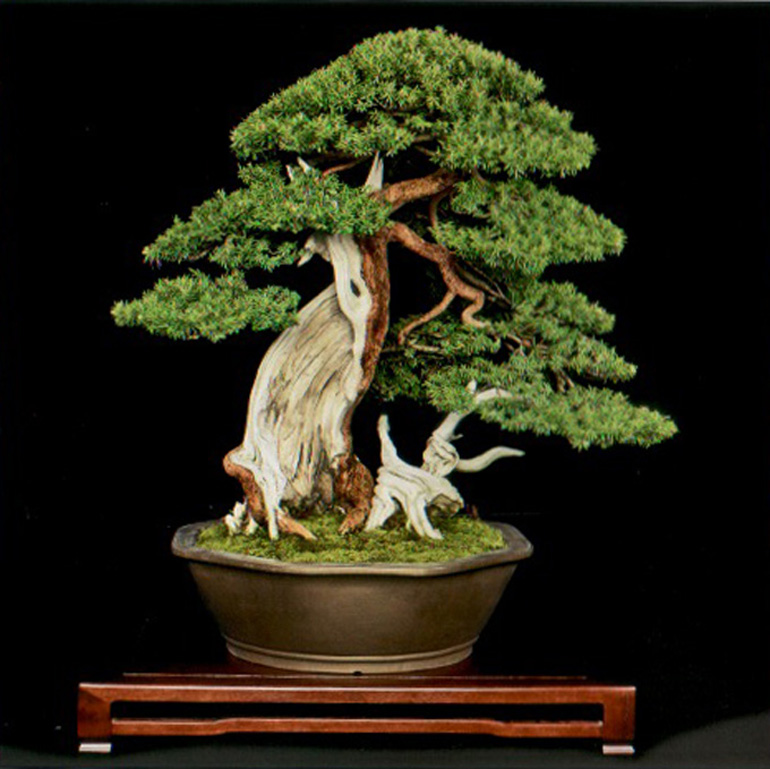 This photo from the
This photo from the 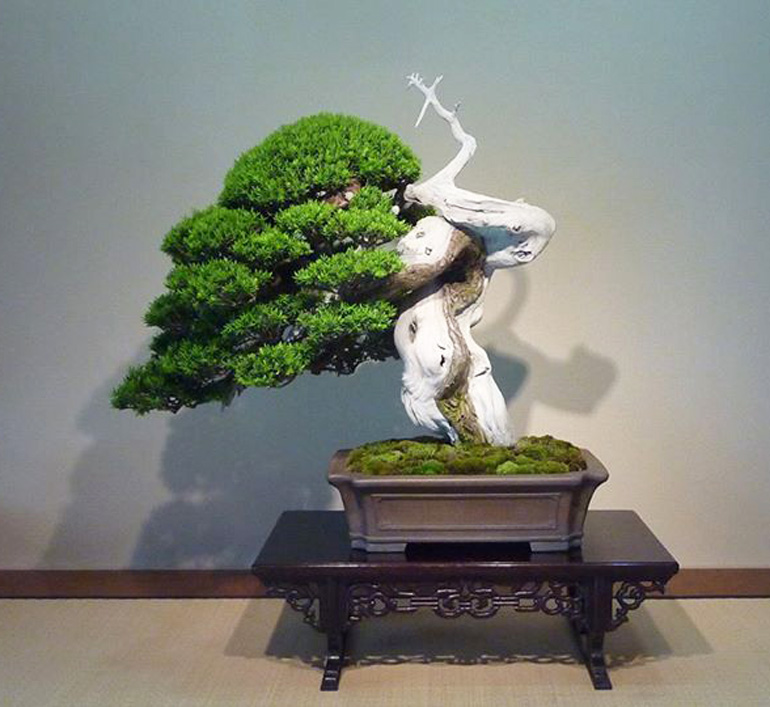 This muscular Japanese yew resides at the
This muscular Japanese yew resides at the 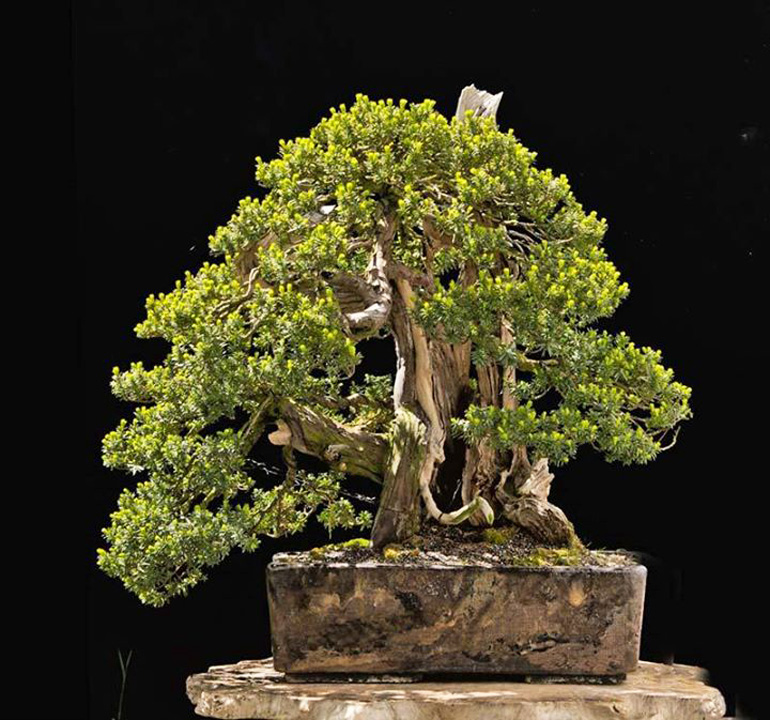 Rugged tree, rugged pot. It's hard to say if the two trunks share a single root system, but my guess is they do. Or maybe there's only one trunk with a large hole in the center. It's another Japanese yew. It belongs to
Rugged tree, rugged pot. It's hard to say if the two trunks share a single root system, but my guess is they do. Or maybe there's only one trunk with a large hole in the center. It's another Japanese yew. It belongs to 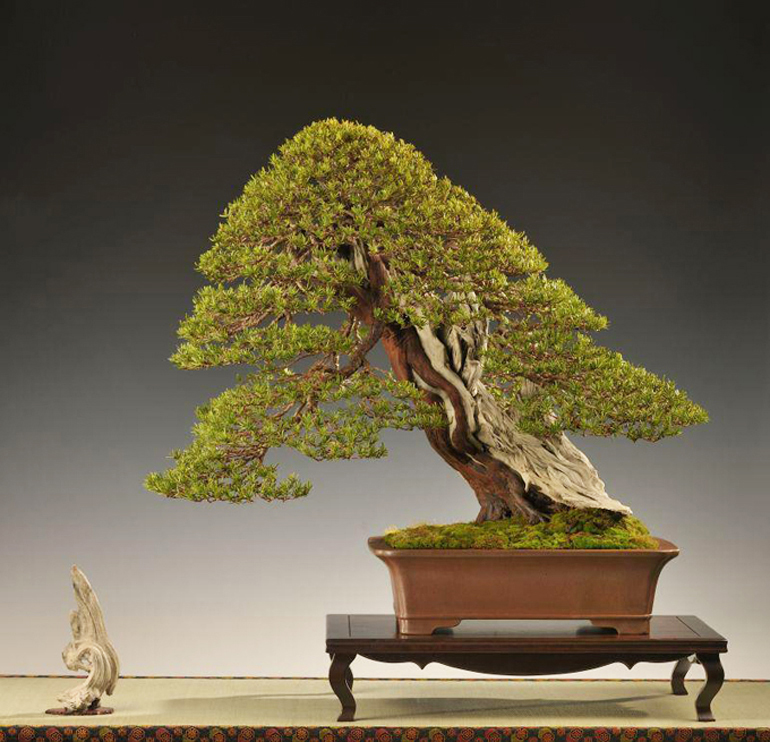 The powerful Yew with its flowing (melting) deadwood and reddish bark belongs to
The powerful Yew with its flowing (melting) deadwood and reddish bark belongs to 